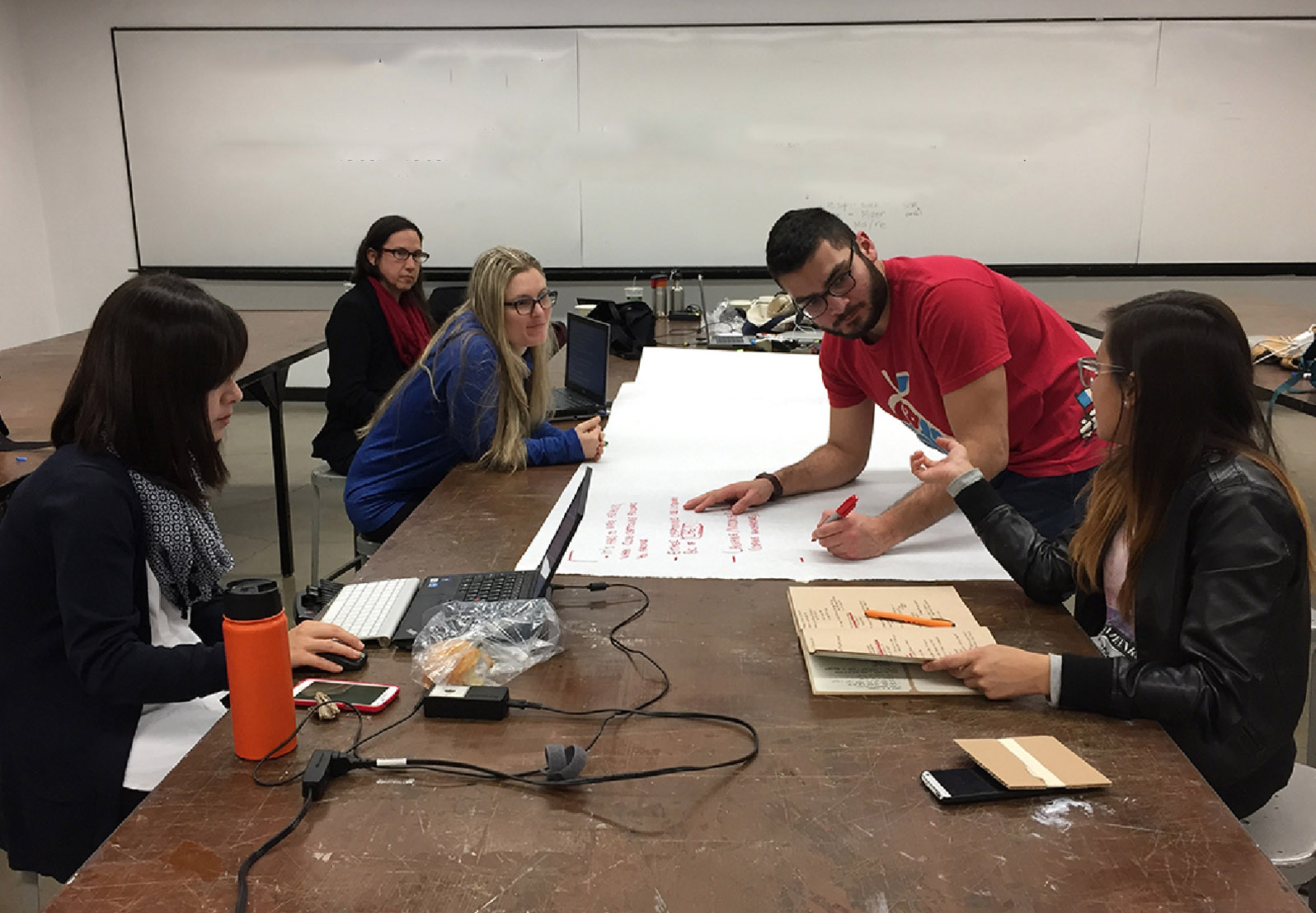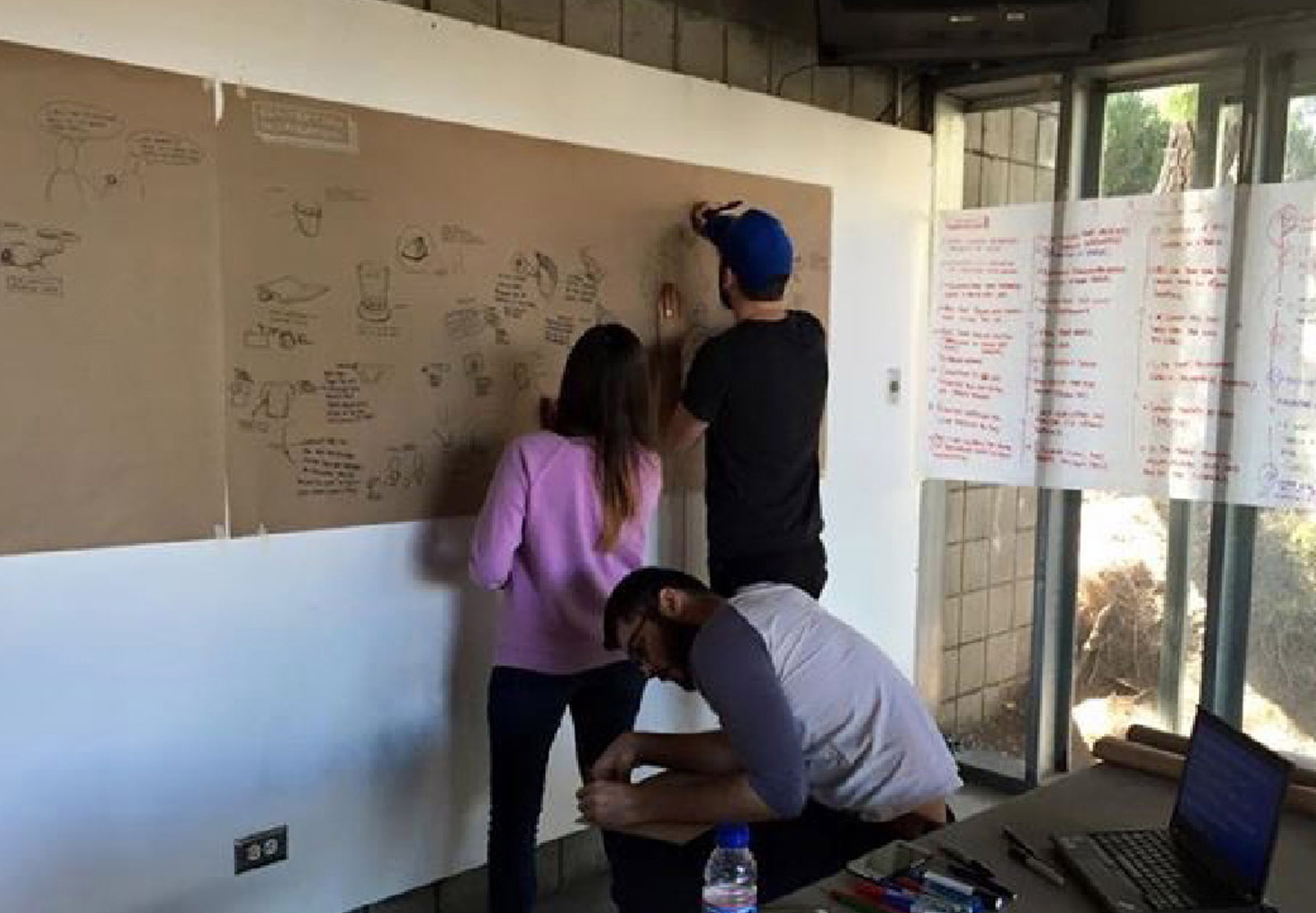Q
Q
Q is a wearable captioning device for people with significant hearing loss.*
* Patent Pending
BRIEF
For 14 weeks, we were tasked to redesign the real-time captioning experience for people with moderate to profound hearing loss.
SOLUTION
Q is a wearable captioning device that allows users to read text with embedded emotion, feel missing phonetic sounds, and bookmark transcripts in real-time for future use.
AWARDS
VentureWell
E-team Grantee
2015 Spark Awards
Concept: Bronze
Team members
Leah Demeter, interaction designer
Daniela Cardona, product designer
Emin Demirci, product designer
Jeff Smith, product designer
PUBLICATION
Click to Read: "Student designers incorporate quantified self metrics into mind-bogglingly innovative devices for people with disabilities"
Play video to see how Q works.
(Video length is 1:45)
Q System
Product Benefits
SOcial Impact
- Social inclusion leads to personal and professional development.
- Increasing interpersonal relationships.
- More confident and independent individuals.
USER BENEFITS
- Better control of conversation situations without relying on stenographers.
- Increased eye contact with temporary captioning.
- More meaningful conversations by understanding emotional subtleties.
Emoticaption
EmoticaptionING CUES
A graph that displays emotional context of the conversation by showing:
1. Emphasis/Duration: The width of the wave
2. Frequency: The light hue is low pitch while the dark hue is high pitch
3. Volume: The amplitude of the wave
Finger Gesture Commands
INTERACTION GESTURE CONTROLS
Activate four different commands by double tapping with fingers.
Record Transcript
Activate Emoticaption
Activate Touch Speech
Create Bookmark
Q Assistant
All recorded transcripts and device settings are managed through the Q Assistant app.
Q App Flow
39 million people in the US live with a significant hearing loss.
TYPES OF HEARING LOSS
There are five types of hearing loss: normal, mild, moderate, severe, and profound. Depending on the type of loss a hearing person has, certain sounds may not be heard. An audiogram is a tool used to diagnose hearing loss. The "speech banana" contains all sounds heard in speech.
five types of hearing
Normal
Mild: 30 dB
(difficulty hearing a whisper)
Moderate: 60 dB
(difficulty with normal conversation)
Severe: 90 dB
(difficulty hearing a motorcycle)
Profound: 120 dB
(difficulty hearing loud rock music)
Real-time Captioning
Existing technology
Many people with hearing loss rely on captioning to follow conversations. Captioners use stenograph machines to write at 275 words per minute.
Interviews
Primary research
Our team conducted six interviews to better understand what it is like living with a hearing loss.
Coco
mild hearing loss
Uses a hearing aid but does not use captioning
Jayna
severe hearing loss
Uses a hearing aid
and uses captioning
Leah
profound hearing loss
Wears a cochlear implant and uses captioning
Dr. Houston
Speech Therapist
Works with patients who have a hearing loss
Diana
Real-time Captionist
Has worked in court, business, and school settings
Cindy
Real-time Captionist
Has worked in court, business, and school settings
Identifying User Needs
Interview Takeaways
Control
Users want to control the situation without being intrusive.
Portability
It is difficult to be mobile with the current captioning equipment.
Privacy
It is difficult to build personal relationships with the captioners following the user around.
Empowerment
Empower the user's confidence and independence.
Gaining User Empathy:
The Earplug Experiment
Participatory RESEARCH
Since I am profoundly deaf, most people don't realize how difficult it is to have a hearing loss on a day-to-day basis. My teammates went through an entire day at school wearing earplugs to better understand what it is like to experience social situations with a hearing loss.
The earplugs that my teammates wore gave them the equivalent of a mild hearing loss.
My team needed to rely on my captioning to understand what was going on during class presentations.
Newfound Insight
experiment takeaways
Repeat Requests
My teammates had to ask people to repeat themselves often.
Voice Volume Unawareness
They were unaware of the volume of their own voices.
Isolation Feeling
They felt distant from others because they could not hear people speaking more than a few feet away.
Team Collaboration
Ideation Process
We did all brainstorming, ideation, and prototyping as a team for long hours outside of class. We sketched on large pieces of butcher paper which allowed us to build on each other's ideas.
































